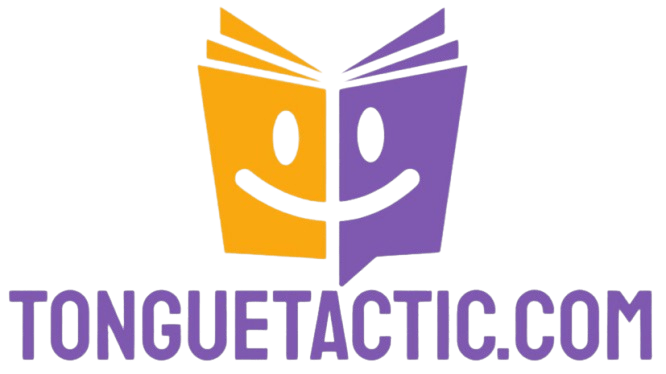using graphic novels for language learning
Graphic novels present a dynamic and engaging approach to language learning, seamlessly blending visual storytelling with rich narratives.
This article explores the world of graphic novels and their unique advantages for language acquisition. You ll discover how to choose the right titles, integrate them into your lesson plans, and harness their potential to elevate reading comprehension, vocabulary, grammar, and syntax.
Discover innovative strategies to engage your students through interactive activities and projects. Transform language learning into an effective and enjoyable experience.
Contents
- Key Takeaways:
- How to Incorporate Graphic Novels into Language Learning
- Improving Language Skills with Graphic Novels
- Engaging Students with Graphic Novels
- Frequently Asked Questions
- Q1. How can graphic novels be used for language learning?
- Q2. What are the benefits of using graphic novels for language learning?
- Q3. Are there any age or language proficiency requirements for using graphic novels as a language learning tool?
- Q4. Can graphic novels be used for learning any language?
- Q5. How can graphic novels be incorporated into language learning lessons?
- Q6. Are there any resources available for finding graphic novels for language learning?
Key Takeaways:
- Graphic novels can be a fun and effective tool for language learning.
- They offer benefits such as improved reading comprehension and vocabulary.
- Carefully choose appropriate titles and integrate them into lesson plans.
- Engage students by using interactive activities and discussions centered around graphic novels.
- Create projects and assignments that allow for creative expression.
What are Graphic Novels?
Graphic novels present an extraordinary form of storytelling that combines illustrations with text. This captivating medium serves both entertainment and education.
Unlike traditional comics, graphic novels explore more intricate narratives and character development, often delving into complex themes and emotions. This format is particularly effective in engaging readers and is invaluable in educational settings.
Incorporating graphic novels can significantly enhance reading comprehension and promote visual literacy, meaning the ability to interpret and make meaning from images. The immersive experience generated by visuals and narrative fosters critical thinking and encourages analysis of character motivations.
As you navigate diverse plots, you not only refine your language skills but also build a stronger connection with the language. Graphic novels serve as powerful educational tools, bridging complex literary concepts and accessible learning while inspiring creativity and analytical thinking among students.
Benefits of Using Graphic Novels for Language Learning
Using graphic novels for language learning offers many benefits, including enhanced vocabulary acquisition and improved reading comprehension.
The blend of visuals and text helps you grasp context and figurative language effectively, turning the language acquisition journey into an enjoyable experience. Relatable characters and situations cultivate a deeper connection with the language.
These unique textual elements make learning interactive and engaging. You can visualize the narrative while comprehending the dialogue, which boosts retention as you easily recall scenes that reinforce new vocabulary.
Character development in these stories opens rich opportunities for discussion and analysis, deepening your understanding of emotions and cultural nuances. The benefits of graphic novels extend beyond language skills, nurturing critical thinking and empathy in readers.
How to Incorporate Graphic Novels into Language Learning
Incorporating graphic novels into your language learning journey can transform your experience as a student and an educator.
By selecting the right graphic novels, you effectively align content with your language skill objectives. This engaging approach makes the learning process interactive and enjoyable.
Utilize graphic novels to complement language exchange sessions or facilitate group discussions, enriching your overall experience of mastering a new language.
Choosing the Right Graphic Novels
Choosing the right graphic novels is essential for your language learning journey. Consider your interests and language skill levels.
Texts that resonate with you boost motivation and engagement. Relatable contexts also enhance comprehension.
Popular titles like “One Piece” and “Mafalda” are great starting points. Selecting novels that align with your interests fosters emotional connections.
Motivation levels vary, so offering diverse genres like fantasy and adventure caters to different tastes.
For beginners, visually rich titles like “Peanut Butter and Jelly” provide simpler narratives. Advanced learners may enjoy “Watchmen” for its intricate storytelling.
Choosing graphic novels that match your language goals aids vocabulary learning and enriches your reading experience.
Incorporating Graphic Novels into Lesson Plans
Incorporating graphic novels can elevate language skills in engaging ways. Design activities focusing on reading comprehension, vocabulary, and grammar within rich narratives.
Using titles like *Watchmen* opens vibrant discussions about themes and character development. Transform lessons into dynamic experiences.
Group discussions on plot interpretation let students articulate their thoughts and enhance conversational skills. Encourage activities where students create their own short graphic novels.
Analyzing visuals alongside text deepens comprehension and enhances critical thinking. This tool actively engages learners and makes language acquisition enjoyable.
Improving Language Skills with Graphic Novels
Graphic novels are fantastic tools to elevate your language skills, especially in reading comprehension and vocabulary learning.
The combination of visual storytelling with text creates an immersive experience. This engages you with the language in exciting ways.
Graphic novels effectively introduce new vocabulary in context, enhancing retention for learners of English, Chinese, or Spanish.
Reading Comprehension and Vocabulary
Reading comprehension and vocabulary are essential in language learning. Graphic novels are powerful tools for both.
Illustrations provide visual context, helping you infer meanings and grasp complex vocabulary. Traditional texts often struggle with this.
Engaging with graphic novels helps you understand language nuances and contextual cues. The learning process becomes enjoyable and effective.
Imagery combined with text helps you connect words with their meanings. This fosters a more holistic understanding of the material.
The interplay of visuals and narratives captures attention while offering multiple ways to decode language. Each learner benefits from this unique approach.
With repeated exposure to new vocabulary in meaningful scenarios, your skills will naturally reinforce. The format also sparks rich discussions about themes and character development, enhancing critical thinking.
Grammar and Syntax
Graphic novels can be incredibly effective tools for teaching grammar and syntax in a way that feels natural and engaging. By diving into the dialogue and narrative structures found within these comics, you can unlock valuable insights into sentence construction, punctuation, and the intricacies of various grammatical elements.
This method allows you to apply grammar lessons in a captivating context, ultimately enhancing your overall language skills.
For instance, a scene where a character is visibly frustrated illustrates the power of punctuation for emphasis, like the exclamation point. You can analyze how shifting from a declarative to an interrogative sentence alters the tone, as captured in a dialogue such as, “You didn t finish your homework?”
This exercise not only lets you practice correcting verb tense but also invites you to explore how syntax, or the arrangement of words in sentences, can convey a character s emotions.
By examining how captions complement images, you can deepen your understanding of sentence fragments versus complete thoughts. This engaging method transforms grammar from a dry subject into a vibrant exploration of storytelling and expression.
Engaging Students with Graphic Novels
Engaging students with graphic novels can elevate their learning experience, especially when paired with interactive activities and discussions that deepen their grasp of the language.
By cultivating a collaborative environment, you can encourage language exchange and boost motivation levels, transforming the learning process into an enjoyable journey.
Group readings, role-plays, and character analysis inspire students to delve into narratives while providing valuable opportunities to practice their language skills in a dynamic way.
Interactive Activities and Discussions
Participating in interactive activities and discussions centered around graphic novels can elevate your language skills while fostering critical thinking.
When you analyze characters, plotlines, and themes, you create opportunities for meaningful conversations that enhance language exchange and comprehension. Activities like debates or group projects allow you to dig deeper into the material, boosting engagement and understanding.
Imagine incorporating role-playing exercises that let you embody different characters, igniting imaginative dialogues and promoting deeper textual analysis. Discussion prompts like What would you do in the protagonist’s situation? can lead to rich exchanges, encouraging diverse viewpoints.
Consider collaborative projects where you create your own graphic stories, blending art with narrative. This exciting method lets you dive deep into language within a creative context. These interactive experiences nurture your language skills and build your confidence as you articulate your thoughts and emotions through a medium that truly resonates with you.
Creating Projects and Assignments
Creating projects and assignments centered around graphic novels can enrich your language learning journey. These thrilling tasks invite you to explore countless possibilities, from character analysis essays to imaginative storytelling, allowing you to express your grasp of the language in various ways.
By incorporating graphic novels into your assignments, educators can align with your interests, making the learning experience feel more relevant and connected to your life.
For instance, you might be tasked with designing your own graphic novel pages that reinterpret a classic story, encouraging both comprehension and creativity.
Engaging in group projects could also be on the agenda, requiring a collaborative analysis of themes, symbolism, and character development within a selected graphic novel. Such assignments deepen your understanding of the language while cultivating teamwork and critical thinking skills.
Educators can enhance your language learning by introducing vocabulary-building exercises that draw from the dialogue and narrative style found in the illustrations, ensuring a rich, multifaceted approach to your learning experience.
Frequently Asked Questions
Q1. How can graphic novels be used for language learning?
A1. Graphic novels can be used for language learning by providing visual cues and context to help with understanding new vocabulary and grammar. They also offer a more engaging and fun way to practice reading, writing, and speaking in a new language.
Q2. What are the benefits of using graphic novels for language learning?
A2. Graphic novels enhance comprehension. They also boost motivation and interest in learning.
This format develops the ability to understand and interpret images while increasing cultural awareness.
Q3. Are there any age or language proficiency requirements for using graphic novels as a language learning tool?
A3. No, there are no age or language proficiency requirements for using graphic novels for language learning. They are helpful for learners of all ages and levels.
Graphic novels can be adapted to suit different needs and abilities.
Q4. Can graphic novels be used for learning any language?
A4. Yes, graphic novels can be used for learning any language. They are available in various languages, including English, Spanish, French, Japanese, and many more.
This versatility makes them a fantastic tool for language learners of different backgrounds.
Q5. How can graphic novels be incorporated into language learning lessons?
A5. You can incorporate graphic novels in various ways. Use them as supplements to traditional textbooks or as group reading activities.
They can also serve as sources of writing or speaking prompts, and teachers can create their own lesson plans using specific graphic novels.
Q6. Are there any resources available for finding graphic novels for language learning?
A6. Yes! There are fantastic resources available to find graphic novels for language learning. Check out websites like Goodreads or Amazon for exciting recommendations!
Teachers can also consult their local libraries or bookstores for suggestions and options.




